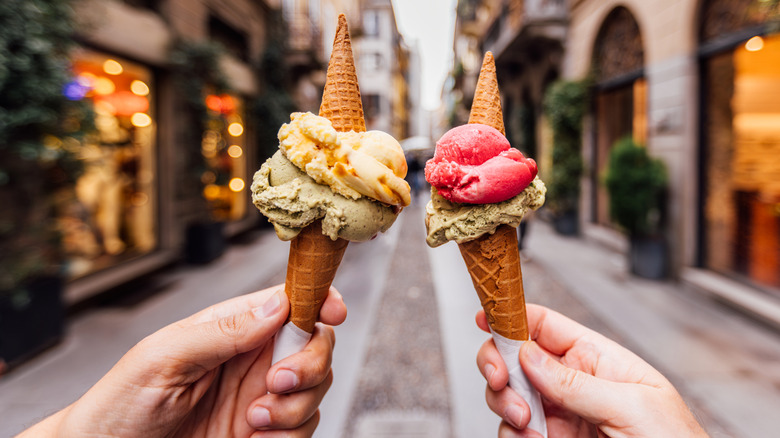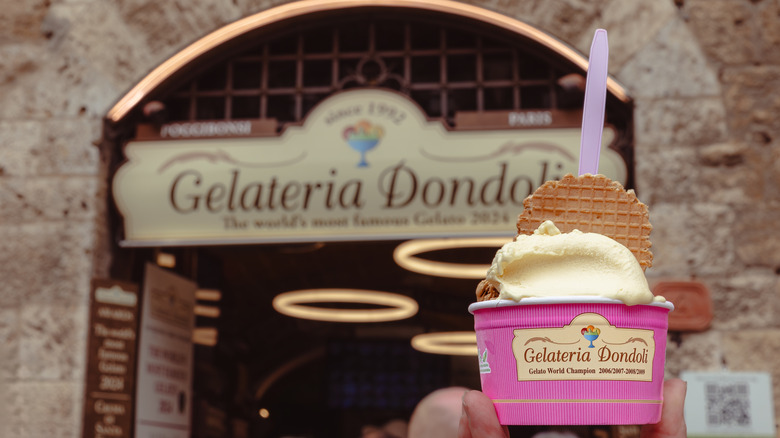The Sweet Trick Rick Steves' Protégé Uses To Find The Best Gelato Abroad
After a full day of touring in the sweltering Italian heat, gelato tastes amazing. Period. But don't be fooled — not all cones in this fabled food country are created equal. Even in Italy, gelatos are all over the map in terms of quality ingredients.
"The vast majority of gelato places use the exact same powdered or paste-like mixes," noted Chiara, a tour guide and guidebook researcher quoted in Cameron Hewitt's Rick Steves blog post. "That's why you should look for words like artigianale — artisanal; or fatto in casa — homemade. You want a place that makes all of their gelato fresh, on the premises, ideally that same day."
Be forewarned, though. Even though a store owner may claim to produce the Italy's best gelato, not all of them are honest. Chiara adds, "Some places advertise these words even though they use the same mixes as everyone else." Fortunately, several other clues can indicate the quality of gelato, and some of these speak louder than any signage. First, gelato in unusually bright colors is probably not artisanal, explained Chiara via Hewitt's post. She says that some makers add weird, bright colors to the gelato to draw the attention of passing children. Another thing she says to look for is how the gelato is stored behind the counter. If it's high-quality gelato, it will probably be kept in a closed bin to maintain freshness rather than piled high in an open container.
Taste tests and pairings
As another key assessment of gelato quality, Chiara recommends conducting taste tests. Like the United States, it's acceptable in Italy to ask for a small gelato sample on a spoon to "try before you buy," as the saying goes. So go ahead, be daring. Taste some of the unusual flavors that artisanal gelato shops have become known for. Instead of pistachio, opt for almond. Say ciao to chocolate and choose sour cherry instead — or pear/cinnamon/gorgonzola. Some renowned gelato makers pride themselves on using local ingredients to create novel flavors, so customers can eat like a local when in their particular region of Italy. For example, Gelateria Dondoli in Sam Gimignano, Tuscany, offers unique flavors such as crema di santa fina (cream, pine nuts, and local saffron) and champelmo (pink grapefruit and sparkling wine from Vernaccia di San Gimignano DOCG).
Don't be afraid to try unusual pairings, either. As described in Hewitt's article, staff at artisanal gelaterias should know their stuff and can often recommend — or veto — gelato pairings. Chiara said, "It's like pairing wine and food: Ideally, you want to find a combination that's mutually enhancing. In fact, if a gelateria takes its craft very seriously, they might politely refuse to pair two flavors that don't go well together." And whatever you do, she pleads, don't combine lemon with chocolate, which for Italians would be like "putting cheese on seafood, or drinking milk after lunchtime." To avoid shocking or irritating the locals, here are a few more things not to do when visiting Italy.

